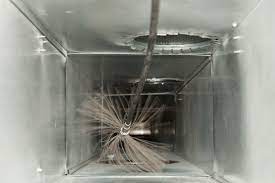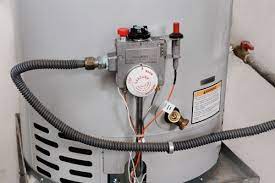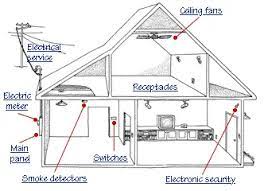The Impact of Pet Dander on Indoor Air Quality: How Air Duct Cleaning Can Help
Pets contribute not only happiness, companionship, and affection to our lives, but also pet dander, which is less than ideal. Pet owners are probably acquainted with the minuscule, frequently imperceptible particles that ascend through the atmosphere and adhere to various surfaces within their residence. Pet dander is an inanimate substance consisting predominantly of skin flakes, hair, and saliva. Pet dander, a prevalent byproduct of pet ownership, can exert a substantial influence on the quality of indoor air, particularly when individuals with respiratory or allergy conditions are present. This blog will discuss the effects of pet dander on indoor air quality and the potential for air duct cleaning to alleviate those effects.
Comprehending Pet Danger
Pet dander is composed of minuscule, airborne particles that are emitted during the process of hair and skin follicle shedding. These particles have the potential to settle on surfaces such as bedding, carpets, and furniture, as well as be inhaled. While pet dander is a prevalent concern among pet owners, certain individuals, especially those with allergies or asthma, may be adversely affected by it.
The following are essential aspects regarding pet dander:
- Allergenic Proteins: Allergenic proteins are present in pet dander and have the potential to induce allergic reactions in individuals who are susceptible.
- Particles in the Air: Pet dander particles possess the minuscule size necessary to attain airborne status and can persist in the atmosphere for prolonged durations.
- Difficult to Remove: Pet dander accumulates over time and can become difficult to completely remove from a home due to its ability to settle in crevices and conceal itself.
The Effects of Pet Danger on the Quality of Indoor Air
Pet dander can negatively impact indoor air quality in a number of ways, including:
1. Allergic Responses: Pet dander contains allergenic proteins that have the potential to induce allergic reactions, such as cutaneous rashes, nasal congestion or runniness, pruritus or watery eyes, and coughing.
2. Asthma Exacerbation: Pet dander exposure has the potential to worsen symptoms of asthma in affected individuals, manifesting as heightened wheezing, dyspnea, and asthma exacerbations.
3. Reduced Air Quality: Pet dander has the potential to contribute to compromised indoor air quality, thereby reducing the overall health of occupants, including those without asthma or allergies.
4. Household Odors: Due to the fact that pet dander can trap and retain odors, the air in your home will be less pleasant.
5. Excessive Dust: Home environments that accommodate pets frequently experience elevated levels of dust, owing to the potential for pet dander particles to combine with dust and other airborne contaminants.
6. Clogged Air Filters: The accumulation of pet dander in HVAC system filters can result in a decline in efficiency, necessitating increased effort from the system to sustain a comfortable indoor temperature.
Methods for Controlling Pet Danger
Several strategies are available to pet owners for the purpose of managing pet dander and enhancing indoor air quality:
1. Regular Grooming
A regular grooming schedule for your pets can assist in mitigating the accumulation of stray hairs and dander in your residence. Externally brushing your pets can be an especially effective method for eliminating stray fur prior to its entry indoors.
2. Regular Vacuuming:
By utilizing a vacuum cleaner equipped with a HEPA filter, pet dander can be effectively captured and obstructed from its free circulation within the environment. Ensure that upholstery, carpets, rugs, and pet bedding are all vacuumed.
3. Air Purifiers:
The implementation of a HEPA filter in a premium-grade air purifier can facilitate the capture and elimination of airborne pet dander particles.
4. Cleaning and Dusting:
Maintain a routine cleaning and dusting schedule for your residence, giving particular consideration to areas that are susceptible to collecting pet dander, including window sills, baseboards, and ceiling fans.
5. Launder Bedding and Curtains:
Regularly launder any curtains or drapes and bedding that your pet uses to eliminate accumulated pet dander.
6. Establish Pet-Free Zones:
Designate specific areas within your household, such as bedrooms, that are free from pets. This will ensure that family members who may have allergies have access to allergen-free surroundings.
7. Professional Carpet Cleaning:
To eliminate pet dander and deeply ingrained allergens, consider having your carpets and upholstery professionally cleaned.
Despite the fact that these methods may assist in reducing the amount of pet dander in your home, it is crucial to keep in mind that pet dander can also accumulate in the air ducts of your residence; therefore, routine air duct cleaning is an essential component of indoor air quality management.
Benefits of Air Duct Cleaning
Air duct cleaning is the procedure by which contaminants, dust, and debris are extracted from the ductwork of an HVAC system. By reducing the circulation of airborne particles, including pet dander, it can substantially enhance indoor air quality. Air duct cleaning can assist in mitigating the negative effects of pet dander on indoor air quality as follows:
1. Elimination of Accumulated Dander:
Particles of pet dander can accumulate in the ductwork of your HVAC system over time. Specialized equipment is utilized during air duct cleaning to dislodge and eliminate these particles, thereby preventing their recirculation into the air of your residence.
2. Enhanced Airflow:
An HVAC system that is free from obstructions in its ducts can function with greater efficiency. This enhanced airflow may aid in preventing dust and dander buildup in the ducts.
3. Mitigated Allergen Circulation:
The act of cleaning the air ducts has the potential to diminish the dissemination of allergens, such as pet dander, across the entirety of the residence. This is particularly advantageous for those who suffer from allergies or asthma.
4. Improved Air Quality:
Through the elimination of pet dander and other impurities from the air ducts, air duct cleaning can significantly enhance the overall quality of indoor air, thereby creating a healthier environment for all members of your household.
It is critical to emphasize that the cleaning of air ducts should be carried out by certified and trained professionals who utilize industry-standard equipment and adhere to established best practices. It is crucial to conduct a comprehensive cleaning of the entire HVAC system, which includes all components and ductwork, in order to attain the intended outcomes.
Consider Air Duct Cleaning When Necessary
Although routine air duct cleaning Hendersonville can contribute to the maintenance of healthy indoor air quality, there are particular circumstances—especially for pet owners—in which this service is especially crucial:
1. Excessive Shedding: Pet owners with animals that shed an excessive amount of fur and dander should consider having their air ducts cleaned more frequently to prevent buildup.
2. Allergies or Asthma: Air duct cleaning can reduce allergen exposure and improve respiratory health for family members with allergies or asthma.
3. Visible Duct Contaminants: An indication of impending air duct cleaning could be the presence of visible dust, debris, or pet dander in the vicinity of your vents or registers.
4. Recent Home Renovation: Dust and contaminants from the construction process may have entered your ducts if you have recently completed home renovations or construction work; therefore, they require a thorough cleaning.
5. Unpleasant Odors: Persistent foul odors in your home may be the result of pet dander, mold, or other air duct contaminants that need to be removed.
To Conclude,
Pet dander, despite bringing tremendous joy and affection into our homes, has the potential to degrade indoor air quality, particularly for individuals who suffer from allergies or asthma. It is critical to implement pet dander management strategies, and air duct cleaning is a fundamental element in preserving the quality of indoor air. You can reduce the circulation of pet dander and other contaminants through professional air duct cleaning, thereby creating a healthier and more hygienic living environment for you and your cherished pets, learn more here.







